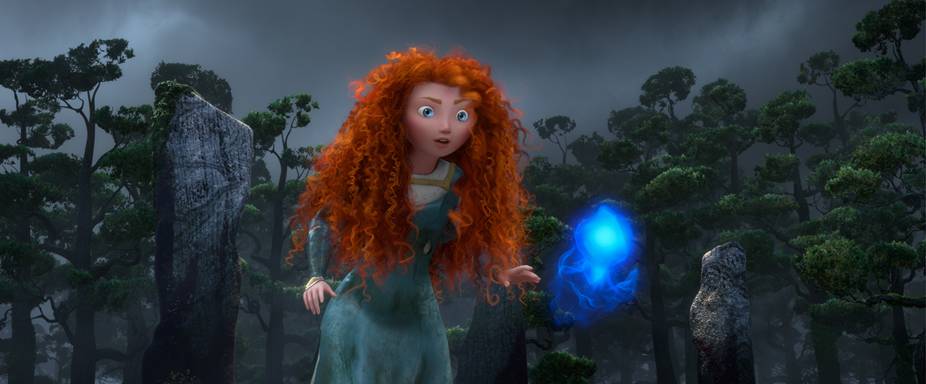
Merida encounters a will-o'-the-wisp © Disney/Pixar

Merida encounters a will-o'-the-wisp © Disney/Pixar
At a young age, Merida first encountered the will-o'-the-wisps while retrieving an arrow from the forest. Excited, she exclaimed, “They really do exist!” but her mother warned that they could lead one to their destiny. Soon after, a bear attacked and took her father King Fergus' leg. Years later, the wisps reappear when Merida, frustrated after an argument with her mother, flees into the forest rather than talking to her mother. They guide her to a witch, whom she asks to change her mother. However, instead of altering her mind, the spell transforms her into a bear (Davis, 2019). In the film, will-o'-the-wisps are depicted as blue, glowing orbs which take the characters down a path full of unforeseen consequences.
But the will-o'-the-wisps were not created by the makers of Brave. Legends of will-o'-the-wisps, also known as “ignis fatuus”, date back centuries and are found in many cultures, including Scotland (Chainey & Winsham, 2021). It is believed that wisps can be souls of the dead, or even messengers from a supernatural world (Hand, 1977). Some stories describe them as mischievous spirits who lure travellers into danger, while other stories speak of the wisps as guides who lead a lost soul to its destination (Newell, 1904; Hand, 1977). In Scottish and Irish folklore, these luminous phenomena are often associated with wandering spirits or supernatural guides who tempt travellers to become lost in swamps and forests (Newell, 1904).
But these mysterious wisps can be explained. They are a natural phenomenon caused by swamp and bog gases rising through the ground and interacting with surrounding elements to produce blue flames (Sanford, 1919). People mistook these lights for little fairies and would drown or get sucked down into the bogs (Admin, 2018).